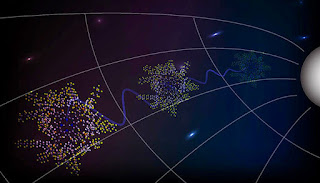Okay; this is a rant, and will probably be my only, or one of very few blogs. That's because I have other venues for writing.
Anyway: Here is something that has caused me consternation for a very long time. Albinos in the media have always been seen as other than human. We have been given red demonic eyes, stark white unruly hair and skin that resembles a corpse or a powdered doughnut.
In fact, we have been portrayed as vampires, aliens, an even underground cannibal brainless brutes. Although I do know some brainless brutes with albinism, this is by no means the norm for people like me.
Believe me; if I had the power to make my eyes glow and make people step out in front of trucks, I certainly would. But I can't do that so breathe easy.
If you have ever seen Village of the Damned, The Time Machine, The Omega Man, or read a Marvel comic you know what I mean. If you've seen End of Days (I know that guy) read The Famished Road or Sent For You Yesterday, you are all too familiar with the albino as some otherworldly freak. I'm not even going to talk about Powder. ugh.
There are people who actually think we are witches or magic.Sometimes this is rather funny. I met a man who thought I was a witch and offered to save my soul. But sometimes it can be downright dangerous. People in parts of Africa have been hacking up albino children collecting their body parts for sale. They have had to put children in safe camps for their protection.
But I digress.
There was a man who contacted me about an albino character he wanted to create for a game. I suggested he give the character long blond dreads. That was a long time ago and I haven't heard anything.
So what would happen if there were a character in a comic book that was just a person with albinism? No superhuman powers, not out to conquer the universe. It would be just like putting an evil dwarf in your story who wasn't evil.
It's all about using disability and difference, as a metaphor for "the other".
I'm not going to offer any answers here since I don't have any myself. How do you portray a person with albinism in the comics? Why would you put them in the story? How would you draw them? I'll let you figure that out. I just thought I'd give you some food for thought.





